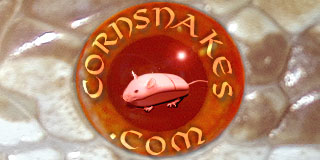I just discovered something disturbing about one of my 10-day-old hatchlings -- I can feel three "bumps" on top of her spine, at various distances down from the head. The bumps are hard, like bone (not soft and squishy). The bumps are on top of the spine, and you can't really see them looking down at her (her body doesn't kink off to the side, but looking at her from ground level, you can see one of those bumps on her spine).
A little more info about this hatchling. I suspect, but don't know for sure, that her parents are siblings, but neither one has any kinks that I can palpate. Five of the original nine eggs in this clutch went bad about 4 weeks into incubation (I suspected at the time that the sphagnum moss at the bottom of the container was too wet). I'm incubating all my clutches in my garage (the "room temp" method) -- temps for that clutch ranged from the low 70s at night to the mid-to-upper 80s during the day (not such a wide temp range in one day, of course, but over the period of 2 months). A clutch of 12 that hatched a week earlier had zero babies with kinks. This clutch hatched at 72 days. Of the four eggs that hatched, only that one snake has kinks.
Are those bumps on the spine considered kinks?
What causes kinks to occur? Genetics or incubation temps or what?
If kinks are genetic, is the problem from a recessive gene, one that both parents must carry? If so, do you get rid of those parents?
What do breeders do with kinked babies? I would guess that severely kinked ones are euthanized, but what about the slightly or moderately kinked babies?
If you choose to let a kinked baby live, will it face kink-related health problems down the line? If it's a female who gets bred, will the kinks interfere with egg-laying?
Has it been proven that a kinked adult produces kinked babies?
I want to be a responsible breeder, so if this one kinked baby has brought to light a genetics problem in my collection, I need to know what to do.
Please help. I would appreciate any and all comments from breeders who have experienced a problem with kinks. Thanks in advance for taking the time to respond.
Liz
A little more info about this hatchling. I suspect, but don't know for sure, that her parents are siblings, but neither one has any kinks that I can palpate. Five of the original nine eggs in this clutch went bad about 4 weeks into incubation (I suspected at the time that the sphagnum moss at the bottom of the container was too wet). I'm incubating all my clutches in my garage (the "room temp" method) -- temps for that clutch ranged from the low 70s at night to the mid-to-upper 80s during the day (not such a wide temp range in one day, of course, but over the period of 2 months). A clutch of 12 that hatched a week earlier had zero babies with kinks. This clutch hatched at 72 days. Of the four eggs that hatched, only that one snake has kinks.
Are those bumps on the spine considered kinks?
What causes kinks to occur? Genetics or incubation temps or what?
If kinks are genetic, is the problem from a recessive gene, one that both parents must carry? If so, do you get rid of those parents?
What do breeders do with kinked babies? I would guess that severely kinked ones are euthanized, but what about the slightly or moderately kinked babies?
If you choose to let a kinked baby live, will it face kink-related health problems down the line? If it's a female who gets bred, will the kinks interfere with egg-laying?
Has it been proven that a kinked adult produces kinked babies?
I want to be a responsible breeder, so if this one kinked baby has brought to light a genetics problem in my collection, I need to know what to do.
Please help. I would appreciate any and all comments from breeders who have experienced a problem with kinks. Thanks in advance for taking the time to respond.
Liz
